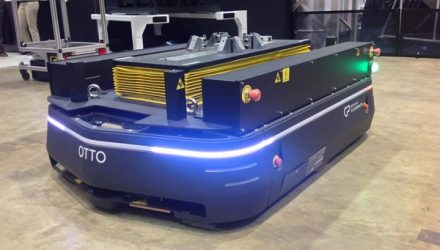Collaborative robots, or “cobots,” are relatively new additions to the robotics industry. They work alongside humans, making repetitive or inefficient tasks easier to manage.
Portable cobots are even more recent advancements. What can people look forward to when these innovations become mainstream?
Tabletop Access
Robotic arms help humans complete tasks that require tremendous precision, such as assembling tiny parts. However, many cobots with precision attachments are dedicated to specific parts of a factory and are difficult to move elsewhere.
This all changes with the launch of the UR3 cobot, Universal Robots’ tabletop model. Weighing less than 25 lbs (<12 kg), it transports easily. Workers need only to take it out of the box, mount it on a hard surface, and program the first task—typically less than an hour’s work.
Learn more about how the UR3 is already increasing workers’ efficiency at companies like Newcomb Spring Corp., which used the cobot for parts handling.
The UR3 is now even easier to move with the ER5 Mobile Robotics Platform, a wheeled base from EasyRobotics. With integrated handholds to push it from one place to another, it allows companies to keep the cobot mobile instead of attaching the UR3 arm to a table. Simple to store in a company truck and handle with one person, the platform is perfect for product demonstrations or sales pitches for companies considering cobots.
Safe Movement
Most cobots stay relatively close to the humans they assist, though built-in technology assures that when they do move, they aren’t dangerous to people. Before long, people may see cobots picking up and transporting materials across factory floors while human employees work alongside them.
A company called Otto Motors is working on two cobots—the Otto 100 and Otto 1500—capable of doing just that. The latter parts of their names represent the number of kilograms each can carry. The cobots are self-powered and use on-board lasers to create initial reference maps.
This Otto 1500 has a payload of 1,500 kg, and has been programmed to pick up and drop off a rack of parts. If you step in front of the robot, it stops and finds a way around.
Those maps get transferred to apps, allowing users to update or edit them. Moreover, if a company chooses to buy more than one of these cobots, the newer ones save time by using the same map.
